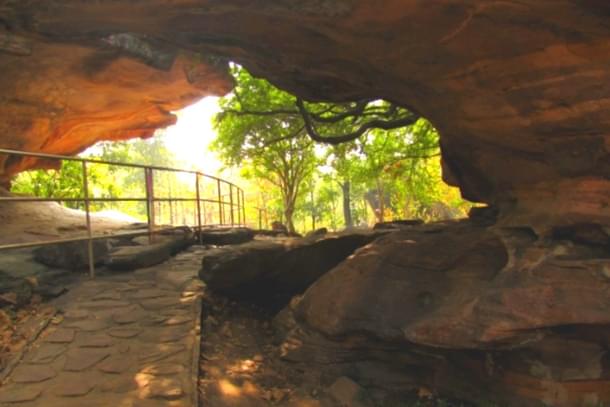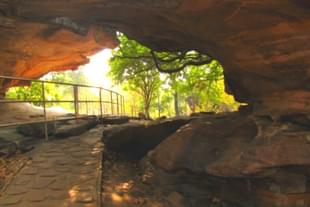Science
Earliest Animal's Fossil 'Found' In Bhimbetka Is Actually A Fallen Beehive: Indian Scientists Refute Find By US Researchers
Swarajya Staff
Jun 17, 2023, 08:17 AM | Updated 08:17 AM IST
Save & read from anywhere!
Bookmark stories for easy access on any device or the Swarajya app.


Indian scientists have debunked previous claims about the origins of the Indian Dickinsonia fossil, which was initially reported to have been unearthed from the renowned UNESCO World Heritage Site Bhimbetka Cave Shelter in a study conducted in 2021.
According to their findings, the fossil is not a genuine prehistoric relic, but rather a remnant impression left behind by a fallen beehive.
The Vindhyan Supergroup, an expansive geological basin that has preserved over a billion years of Earth's history, stands as one of the largest basins globally and has yielded numerous fossil discoveries shedding light on the origins and diversification of early life on our planet.
A team of American scientists had previously reported the existence of an Ediacaran fossil in the area, prompting a group of Ediacaran paleontologists at the Birbal Sahni Institute of Palaeosciences (BSIP) to investigate further in the hopes of unearthing additional similar fossils.
The Ediacaran fossils, believed to be the earliest-known animals on Earth dating back around 550 million years, have captured the attention of evolutionary biologists and paleontologists alike.
Fossil discoveries from the Precambrian Era (spanning 4,000 to 538 million years ago) provide valuable insights into the evolutionary changes that shaped life on our planet.
Given their significance for our understanding of life's evolution, these discoveries attract meticulous scrutiny from the research community.
To examine the authenticity of the Dickinsonia tenuis fossil, a significant Ediacaran specimen considered to be the earliest animal, the team from BSIP, an autonomous institute under the Department of Science and Technology, travelled to the site of the initial discovery at the UNESCO World Heritage Site Bhimbetka Cave Shelter.
Located within the Maihar Sandstone of the Vindhyan basin, this purported fossil was subjected to thorough reevaluation in the field to determine its biogenicity (chemical and/or morphological signature preserved over a range of spatial scales in rocks, minerals, ice, or dust particles that are uniquely produced by past or present organisms).
"Field observations, outcrop features, and detailed laboratory analyses (XRD, Raman Spectroscopy) published in the Journal of the Geological Society of India did not support the biogenicity and syngenecity (formed at the same times as the enclosing rock) of fossil and it was inferred as a left-over impression of a fallen beehive. The study refutes the interpretation given by renowned American researchers," the Ministry of Science and Technology said in a release on Friday (16 June).
During their field study, the researchers observed that, unlike authentic fossils, which are always preserved on the bedding plane of rock strata, the Dickinsonia sample in question was only partially preserved on the bedding plane, with the remaining portion found on a transversally cut face of the Maihar Sandstone outcrop.
"Both fresh and decayed honey beehives were observed on the same bedding plane. A giant active beehive with several bees Apis dorsata attached to the hive was also found. Honeycomb structure was also observed. This evidence shows that the described fossil was misinterpreted as Dickinsonia," the ministry said.
To validate their claims, the scientists employed advanced techniques such as laser Raman spectroscopy and X-ray diffraction (XRD), which confirmed the presence of honey and wax in the material, due to the activity of bees in forming hives.
According to the ministry, such misinterpretations are rare, but they need to be corrected with due diligence for tracing the exact evolutionary trail and the correct study of the Indian geology.





